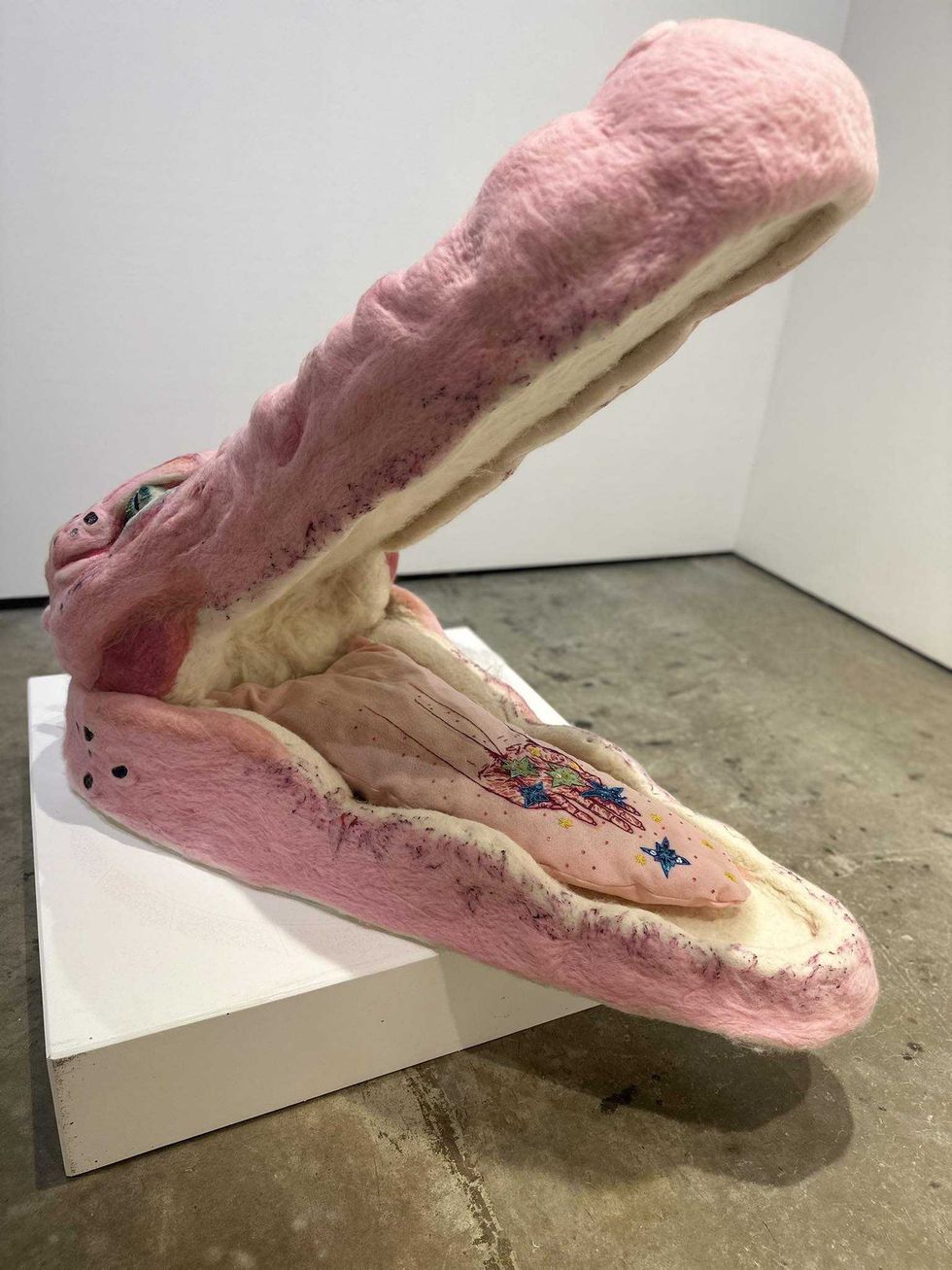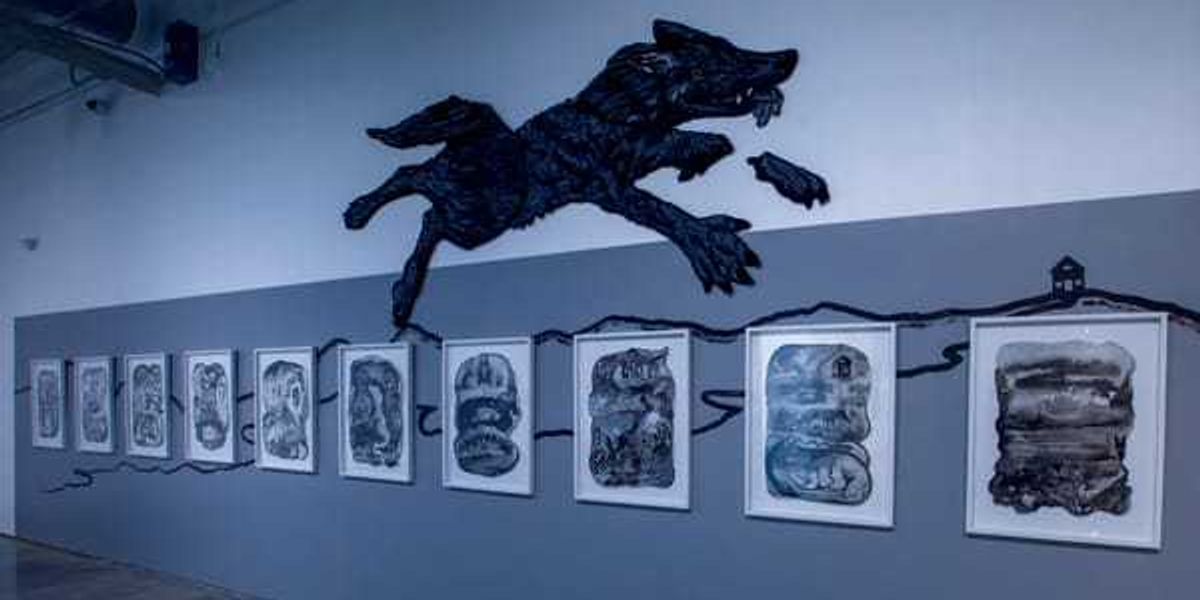A new art exhibit at downtown San Antonio’s Centro de Artes Gallery will celebrate the things that go bump in the night. Beginning October 2, Cuentos y Arte: Mexican American Folk Tales of the Southwest showcases artworks inspired by often eerie regional stories that are vital to the local Hispanic community.
The exhibit, influenced by the classic 1980 anthology Cuentos: Tales from the Hispanic Southwest, will feature paintings, lithographs, drawings, soft sculptures, textiles, and installations from five women artists who have lived and/or worked across South Texas and the Southwest United States.
The participating artists – Lisette Chavez, Audrya Flores, April Garcia, Angelica Raquel, and Hailey Marmolejo – created art pieces that draw upon the 23 cuentos, or “folk tales,” contained inside the book.
The spectacular tales cover witchcraft, magic, odd events, and the dark figures that have become oral storytelling traditions among early Spanish settlers and their descendants.
Cuentos y Arte, like its source material, revolves around infamous Mexican American folk tales and legends:
- El Hombre, El Burro y El Perro (Man, Burro, Dog)
- El Santo Niño (The Holy Child)
- El Cucuy (a mythical ghost-like being)
- La Lechuza (an evil witch who changes into an owl and preys on children)
- La Llorona (a weeping woman who cries along rivers and creeks after drowning her children in a fit of rage)
Rebecca Gomez, a San Antonio native, art historian, and author, curated the supernatural show. She says the book and exhibit show how oral tradition shapes cultural memory and identity.
“By bringing five contemporary women artists into dialogue with generations of storytellers, the show translates living folktales into visual form and underscores that these narratives are archives, moral guides, and sources of resilience that continue to evolve,” Gomez says. “Each telling adapts to its time and place, proving that folklore is never static —it’s alive and responsive to our present,” she added.

The enduring spirit of La Llorona
Raquel, a Laredo native who now resides in San Antonio, focused her eye on the enduring legend La Llorona.
“For me, folklore has been an important part of my growing up and familial ties,” she says. “It is the ritual of storytelling that bonded my family together and allowed us to reach back to our departed loved ones and reach forward to the younger generations.”
In Raquel’s eyes, the tragic La Llorona is an especially key legend in the Latinx community, one that particularly speaks to women.
“La Llorona resonates deeply with me,” Gomez adds. “In Angelica Raquel’s ‘The Tragedy of La Llorona,’ the legend becomes less about fear and more about grief, mental health, and the pressures women face —transforming a cautionary tale into a poignant reflection on loss and societal neglect.”
Old legends in a new light
Marmolejo, born and raised in San Antonio, says her paintings reimagine traditional Mexican American folk tales and legends through a contemporary Tejana lens.
“Each work takes a story or figure that has long circulated in our culture and reframes it to uncover layers of meaning around gender, identity, and power,” she says.
One of Marmolejo’s paintings, titled ‘Immaculate,” portrays Virgin de Guadalupe as “a nude, unapologetically pregnant woman crowned with a pink cowboy hat” as she tackles the Madonna-whore complex and celebrates the complexity of womanhood.
In Marmolejo’s other works, La Llorona is a figure who addresses generational grief and silenced voices, while La Malinche — an indigenous woman who contributed to the Spanish conquest of the Aztec empire — is recast as the betrayed rather than the betrayer, reclaiming her agency from history.
“Works like ‘La Mano Pachona’ and ‘The Donkey Lady’ lean into the humor and strangeness of folklore, showing how even the most fantastical stories shape the way we grow up,” Marmolejo explains.
In Marmolejo’s view, such regional folk tales and legends shape a people’s sense of identity, morality, and imagination. She has long been fascinated with the Donkey Lady, a disfigured woman who is said to haunt part of the Medina River on the South Side. Marmolejo said the legend shows how folklore blurs the line between myth and reality.
“They are cultural blueprints, but they’re also mutable, changing with each retelling. I’m drawn to the tension between what these tales were meant to teach and what they reveal about fear, control, survival, and resilience,” Marmolejo says.
The October 2 opening reception for Cuentos y Arte and another Centro de Artes exhibit, Madre Land: South Texas Memory and the Art of Making Home, will be held from 6–9 pm at 101 S. Santa Rosa St. The event, which includes light refreshments, is free and open to the public. Both exhibits will be on view through February 22.
